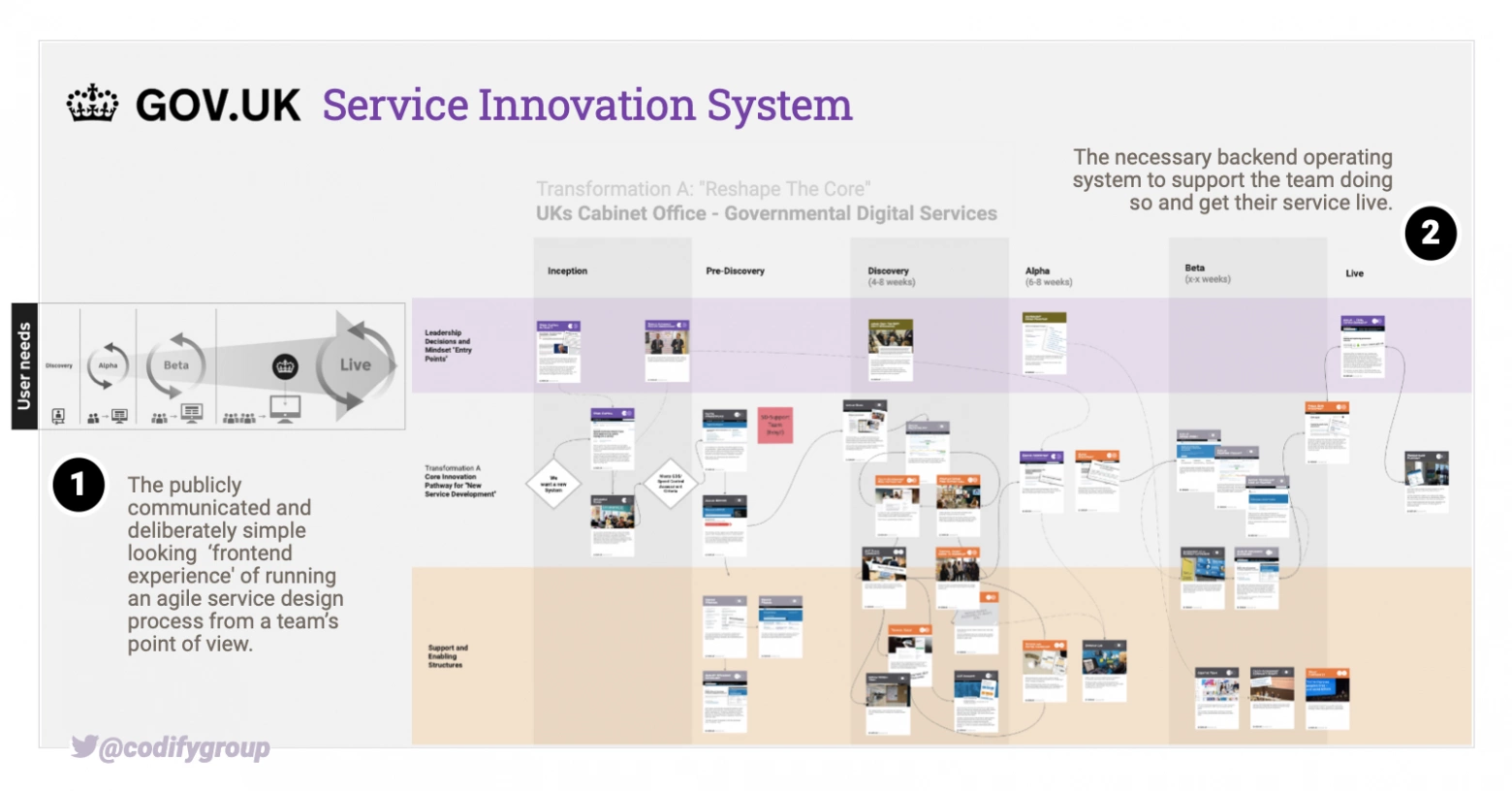At best an innovation system doesn’t just emerge but is rather purposefully designed to enable ideas to process through the innovation pipeline in a steady and frictionless way, with the goal of reaching implementation or market commercialization. The innovation system therefore defines and supports different innovation pathways through an organization: ‘incremental improvement’ (CIP), ‘reshaping the core’ (Transformation A), and ‘creating the new’ (Transformation B). It organizes and supports the dual nature of the firm. Lean innovation systems, in particular, are set up in ways that encourage experimentation and hypothesis-driven project work. As such they reduce waste, e.g. ‘zombie projects’ or ‘political innovation’. At industry conferences or in blogs you might also hear or read about the term ‘innovation ecosystem’, which is being used synonymously.
In politics, the term tends to be used in line with Friedrich List’s and Bengt-Åke Lundvall’s notion of innovations systems in society (on regional, sectoral, or national levels). Here it denotes the flow of technology and information among people, enterprises, and institutions of a nation.
An example of an innovation system and its vehicles for transforming the core organization.
Want to facilitate the design of your innovation system?
Then this card set might be useful for you:

